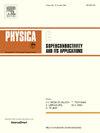基于约瑟夫森阵列的超导开关的仿真与分析
IF 1
3区 物理与天体物理
Q4 PHYSICS, APPLIED
Physica C-superconductivity and Its Applications
Pub Date : 2025-01-08
DOI:10.1016/j.physc.2024.1354644
引用次数: 0
摘要
超导过渡边缘传感器(TES)已被应用于各种天文探测系统。为了提高探测效率,超导开关是时分复用系统的重要组成部分。然而,磁通驱动超导开关存在面积大、噪声高、操作复杂等问题。本文提出了一种带有 RL 传输单元的非磁滞约瑟夫森结阵列结构来实现超导开关。首先,基于约瑟夫森结的电流方程,建立了超导开关的 PSPICE 模型。然后,分析了传输 100 MHz 信号的单结开关的优化设计。最后,我们分析了在传输 1 GHz 以上信号时如何抑制高频噪声。由于约瑟夫森结阵列开关的信号由 SQUID 直接读出,因此具有减少开关面积和操作复杂性的优势。本文章由计算机程序翻译,如有差异,请以英文原文为准。
Simulation and analysis of a superconducting switch based on Josephson array
Superconducting transition edge sensors (TES) have been applied to a variety of astronomical detection systems. To improve their detection efficiency, superconducting switches are essential components in time-division multiplexing systems. However, flux-actuated superconducting switches have such problems as large area, high noise, and complex operation. This paper proposes a structure of non-hysteresis Josephson junction array with RL transmission unit to realize a superconducting switch. Firstly, based on the current equation of the Josephson junction, a PSPICE model of a superconducting switch was established. Then, the optimization design of a single junction switch transmitting a 100 MHz signal was analyzed. Finally, we analyzed how to suppress high-frequency noise when transmitting signals above 1 GHz. Since the signal of the Josephson junction array switch is directly read out by the SQUID, it has the advantage of reducing the switch area and operation complexity.
求助全文
通过发布文献求助,成功后即可免费获取论文全文。
去求助
来源期刊
CiteScore
2.70
自引率
11.80%
发文量
102
审稿时长
66 days
期刊介绍:
Physica C (Superconductivity and its Applications) publishes peer-reviewed papers on novel developments in the field of superconductivity. Topics include discovery of new superconducting materials and elucidation of their mechanisms, physics of vortex matter, enhancement of critical properties of superconductors, identification of novel properties and processing methods that improve their performance and promote new routes to applications of superconductivity.
The main goal of the journal is to publish:
1. Papers that substantially increase the understanding of the fundamental aspects and mechanisms of superconductivity and vortex matter through theoretical and experimental methods.
2. Papers that report on novel physical properties and processing of materials that substantially enhance their critical performance.
3. Papers that promote new or improved routes to applications of superconductivity and/or superconducting materials, and proof-of-concept novel proto-type superconducting devices.
The editors of the journal will select papers that are well written and based on thorough research that provide truly novel insights.

 求助内容:
求助内容: 应助结果提醒方式:
应助结果提醒方式:


